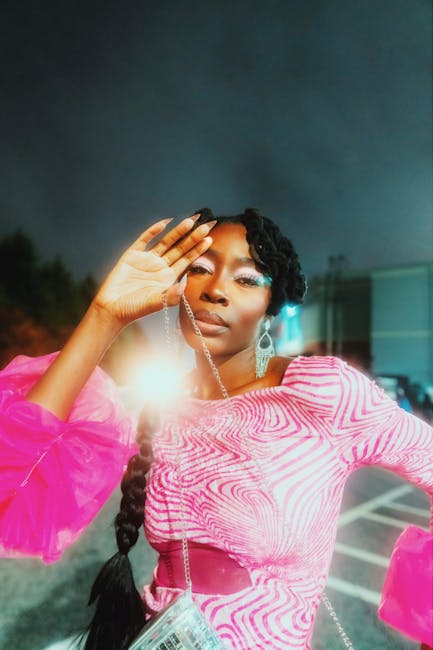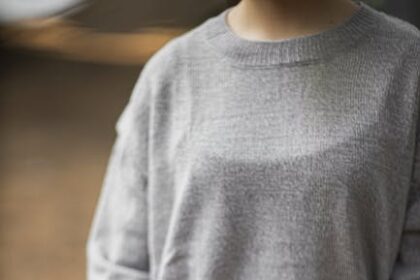Crafting Engaging TikTok Ad Hooks
The relentless scroll of the TikTok “For You Page” (FYP) represents a modern-day battleground for attention. In this hyper-visual, sound-on, rapid-fire environment, the first few seconds of any content, especially an advertisement, are paramount. These initial moments are not merely important; they are the entire foundation upon which ad performance is built. Without an immediate, compelling reason to pause, viewers will effortlessly swipe past, rendering even the most meticulously crafted product or service pitch invisible. This necessitates an extreme focus on what is universally referred to as the “hook” – the element designed to stop the scroll, capture immediate interest, and compel a viewer to watch the remainder of the ad. Understanding the psychology of the TikTok user, the nuances of the platform’s algorithm, and the specific creative elements that resonate are critical for anyone aiming to produce high-performing TikTok advertising campaigns.
Understanding the TikTok Ecosystem and the Primacy of Hooks
TikTok’s unique user experience fundamentally dictates the approach to ad creative. Unlike traditional platforms where users might actively seek out content or engage with longer-form videos, TikTok thrives on discovery, serendipity, and bite-sized entertainment. The FYP is a continuous stream of short videos, tailored by an exceptionally potent algorithm that learns individual preferences at an astonishing rate. Users are conditioned to rapid consumption, often spending mere milliseconds assessing whether a piece of content warrants their continued attention. This ingrained behavior means advertisers have an incredibly small window – typically 1 to 3 seconds – to make an impact. If a video fails to immediately engage, the thumb flickers, and the opportunity is lost. This isn’t just about view duration; it’s about algorithmic signals. TikTok’s algorithm prioritizes content that commands high watch time and engagement. A strong hook contributes directly to these metrics by preventing early drop-offs, signaling to the algorithm that the content is relevant and valuable, thereby increasing its distribution potential.
The challenge is further amplified by the inherent “ad fatigue” that naturally develops among users exposed to too many uninteresting commercial messages. Generic, sales-pitch-laden openings are instantly recognizable and discarded. To succeed, an ad hook must seamlessly blend into the organic, entertainment-driven content users are accustomed to. It should feel less like an interruption and more like a continuation of the engaging, often quirky or informative, stream of videos they’ve been enjoying. This requires a departure from traditional advertising tropes, favoring authenticity, relatability, and a deep understanding of current trends and user behaviors on the platform. The hook isn’t just a catchy phrase or a striking visual; it’s a strategic psychological maneuver designed to interrupt the pattern of passive scrolling and initiate active viewing. It transforms a potential bypass into a genuine interaction, laying the groundwork for the rest of the ad to deliver its message effectively.
The Psychology Behind Scroll-Stopping Hooks
Effective TikTok ad hooks tap into fundamental psychological principles that govern human attention and decision-making. These principles are universal but manifest uniquely within the TikTok environment due to its speed and format.
- The Curiosity Gap: This is perhaps the most powerful psychological lever. Humans are inherently driven to fill knowledge gaps. A hook that presents an intriguing question, an unexpected statement, or a surprising visual anomaly creates a “gap” between what the viewer knows and what they want to know. Examples include “You won’t believe what happened next,” “The secret they don’t want you to know,” or a visual that defies immediate explanation. This gap compels viewers to watch longer to satisfy their innate curiosity. For advertisers, this means hinting at a solution, a benefit, or a revelation without fully disclosing it upfront.
- Emotional Triggers: Emotions are potent drivers of attention and action. Hooks that evoke a strong, immediate emotion – be it humor, shock, relatability, aspiration, or even mild annoyance (in a constructive way) – are highly effective.
- Humor: A funny setup, an absurd scenario, or a witty observation can immediately disarm a viewer and make them more receptive. Laughter is a powerful shared experience.
- Shock/Surprise: An unexpected visual, a sudden sound effect, or a counter-intuitive statement can break the scrolling pattern. This needs to be done carefully to avoid negative reactions, but a genuinely surprising element can be highly memorable.
- Relatability: Showing a common pain point, a universal struggle, or a shared experience allows viewers to see themselves in the content. “Anyone else feel like this?” or depicting a scenario many have faced builds instant connection.
- Aspiration/Inspiration: Hooks that present an ideal outcome, a desirable lifestyle, or a transformative change can tap into viewers’ desires for self-improvement or personal fulfillment. “Imagine if you could…”
- Fear of Missing Out (FOMO): Highlighting limited availability, exclusive offers, or a trend that everyone else is adopting can create a sense of urgency and compel immediate engagement.
- Problem/Solution Framing: Many effective hooks immediately articulate a problem that resonates with the target audience and then subtly hint that a solution is forthcoming. This creates a narrative arc, even in just a few seconds. “Tired of [common problem]?” or “Struggling with [issue]?” immediately hooks those who experience that specific pain point, promising relief or an answer.
- Novelty and Surprise: The human brain is wired to notice novel stimuli. Anything that is visually or auditorily new, different, or unexpected will naturally capture attention. This could be an unusual visual effect, a unique sound, or a genuinely original concept that stands out from the repetitive content often seen on the platform. The element of surprise keeps the viewer engaged, wondering what will happen next.
- Social Proof and Authority: While often appearing later in an ad, the hint of social proof or authority can be integrated into a hook. Phrases like “Used by thousands,” “The #1 choice for X,” or showing a quick glimpse of an expert or celebrity can establish credibility and draw viewers in, suggesting that something validated and trustworthy is about to be presented.
- Direct Address and Personalization: Directly speaking to the viewer, using “you,” and asking rhetorical questions can create an intimate, one-on-one connection. Even better, segmenting audiences and tailoring hooks to specific demographics or interests makes the content feel hyper-relevant. “Are you a small business owner who struggles with marketing?” immediately filters and engages a specific group.
- Pattern Interruption: The most fundamental psychological principle at play on TikTok. Users are in a state of flow, passively consuming content. An effective hook is a sudden, jarring, yet intriguing pattern interruption. This can be achieved through:
- Sudden change in pace: A slow-motion shot suddenly cutting to fast-paced action.
- Abrupt sound changes: Silence followed by a loud, unexpected noise.
- Unusual visual composition: A bizarre angle, an unexpected object, or a striking color palette.
- Direct command: “STOP SCROLLING!” (though this can be overused and feel salesy if not done creatively).
By consciously integrating these psychological principles, advertisers can move beyond mere guessing and build hooks that are scientifically engineered to capture and hold attention in the fleeting world of TikTok.
Categorizing Effective TikTok Ad Hooks
Effective TikTok ad hooks can be broadly categorized by their primary medium of impact: visual, audio, or text overlay. Often, the most potent hooks combine elements from all three, creating a multi-sensory experience that is difficult to ignore.
1. Visual Hooks:
The visual element is foundational on a platform like TikTok. What the viewer sees in the first 1-3 seconds is paramount.
- Motion and Dynamic Action: Static or slow-moving visuals are often scrolled past. Hooks with immediate, dynamic motion, quick cuts, or unexpected movements grab attention.
- Example: A product flying into the frame, a person jumping into action, a rapid transformation sequence (e.g., messy room to clean room in a single cut).
- Unexpected Imagery or Composition: Anything that breaks visual predictability.
- Example: A product used in a bizarre or unconventional way, a person dressed in an unusual outfit in a mundane setting, a shot from an extreme or disorienting angle.
- Bright Colors and High Contrast: Visually striking palettes stand out. TikTok’s native content often uses vibrant colors, so ads should align or intentionally contrast to draw the eye.
- Example: A product in a neon color against a muted background, a scene bathed in a single, intense hue.
- Before-and-After Transformations: Visually demonstrating a dramatic change quickly captures interest, especially for products related to beauty, fitness, home improvement, or problem-solving.
- Example: Showing a damaged item instantly repaired, a dull complexion becoming radiant, a cluttered space instantly organized. The “before” needs to be instantly recognizable and the “after” instantly desirable.
- Product Reveal/Intrigue: Instead of just showing the product, revealing it in an interesting or mysterious way.
- Example: A product emerging from smoke, being unboxed dramatically, or partially visible with a “guess what this is” vibe.
- Close-Ups with Detail: Focusing intensely on a texture, a small movement, or a specific feature of a product can create a sense of intimacy and curiosity.
- Example: Extreme close-up of a brush applying makeup, fabric texture, or a mechanism working.
- Pattern Interruption Visuals: A sudden change in scene, a glitch effect, or an unexpected visual element that forces a double-take.
- Example: A scene suddenly switching to black and white, a person appearing to teleport, or an object defying gravity.
2. Audio Hooks:
TikTok is a “sound-on” platform. Audio is not supplementary; it’s integral to the user experience and often the primary trigger for engagement.
- Trending Sounds/Music: Leveraging sounds that are currently popular on TikTok can instantly make an ad feel native and relevant. Users often recognize these sounds within milliseconds.
- Example: Using a currently viral song or sound effect as background music, or mimicking a popular audio trend with relevant visuals. The key is to integrate it naturally, not just slapping it on.
- Surprising Sound Effects (SFX): A sudden, unexpected sound can immediately grab attention and stop the scroll.
- Example: A loud bang, a comedic “record scratch” sound, a unique chime, or an exaggerated cartoon sound effect that contrasts with the visual.
- Direct Address/Question (Voiceover): A clear, concise voiceover that directly speaks to the viewer or poses a relatable question.
- Example: “Are you tired of…?” “Listen up!” “This is for you if…”
- Emotional Voiceovers/Expressions: A voiceover delivered with strong emotion – excitement, urgency, humor, or vulnerability – can be very compelling.
- Example: An overly dramatic narration for a mundane task, a whispered secret, or a rapid-fire, enthusiastic pitch.
- Authentic Human Voices/User-Generated Content (UGC) Audio: Unpolished, real voices often resonate more than highly produced commercial narrations, mimicking the UGC feel.
- Example: A testimonial starting with a genuine, unscripted reaction, or a person simply talking to the camera as if to a friend.
- Sound Mismatch/Contrast: Pairing an unexpected sound with a visual can create humor or intrigue.
- Example: A serious visual paired with a silly sound, or a mundane action with epic orchestral music.
3. Text Overlay Hooks:
Even with strong visuals and audio, clear, concise text on screen can reinforce the hook, particularly for sound-off viewers or to provide immediate context.
- Bold Questions: Posing a direct question that resonates with a pain point or curiosity.
- Example: “Struggling with sleep?” “Is your skin looking dull?” “Need to save money?”
- Intriguing Statements/Promises: Delivering a strong, benefit-driven statement or an irresistible promise.
- Example: “This will change your mornings.” “The only hack you need for X.” “Unlock flawless skin in 7 days.”
- Shocking Statistics/Facts: Using a surprising piece of information to pique interest.
- Example: “80% of people make this mistake.” “Did you know X?” “Only 1 in 10 achieves Y.”
- Call to Action (Immediate): Sometimes, a very direct instruction can act as a hook, especially if it feels like a challenge.
- Example: “STOP SCROLLING IF…” “Watch this if you have X problem.”
- Problem/Solution Headlines: Clearly stating a common problem in the first few words.
- Example: “Say goodbye to frizz.” “No more awkward silences.” “Your solution to messy cables.”
- Curiosity-Driven Headlines: Text that hints at a secret, a reveal, or something unexpected.
- Example: “The secret your dentist won’t tell you.” “You’re doing X wrong.” “Wait for it…”
- Relatability Statements: Text that verbalizes a common, relatable experience.
- Example: “Me trying to save money:” (followed by a relatable, funny visual). “When you realize…”
The most effective TikTok ad hooks often ingeniously layer these categories, creating a synergistic effect where the visual complements the audio, and the text provides an immediate, reinforcing message. This multi-modal approach maximizes the chances of stopping the fleeting attention of the TikTok user.
Specific Hook Archetypes and Their Application
Moving beyond broad categories, specific archetypes of hooks have proven consistently effective on TikTok. Understanding these “templates” allows advertisers to quickly brainstorm and develop relevant, engaging openings for their ads.
-
The Question Hook:
- Description: Starts with a direct question designed to resonate with the target audience’s pain points, desires, or curiosities.
- Application: Ideal for problem/solution products, educational content, or audience segmentation. The question should be highly specific and relatable.
- Examples:
- “Tired of dry, brittle hair?” (for a hair care product)
- “Struggling to manage your budget?” (for a finance app)
- “Do you know the secret to perfect skincare?” (for a beauty product)
- “What if you could learn a new skill in just 10 minutes a day?” (for an online course)
- Why it works: It forces immediate self-reflection and establishes relevance. If the viewer identifies with the question, they’re hooked for the answer.
-
The “Did You Know?” / Informative Hook:
- Description: Opens with a surprising fact, statistic, or piece of knowledge that challenges common assumptions or reveals something new.
- Application: Great for products with unique features, hidden benefits, or educational value. It positions the ad as providing valuable insight.
- Examples:
- “Did you know 80% of toothbrushes miss this spot?” (for a unique toothbrush design)
- “Most people store their avocados wrong. Here’s why…” (for a food preservation product)
- “This one ingredient is secretly ruining your skin.” (for a skincare product)
- “The average person spends X hours a week on laundry. What if you could cut that in half?” (for a laundry appliance)
- Why it works: Taps into the curiosity gap and the desire for knowledge. It frames the ad as an educational moment, not just a sales pitch.
-
The Problem/Solution Hook:
- Description: Clearly articulates a common problem in the opening seconds, then immediately positions the product/service as the perfect solution.
- Application: Universal for virtually any product or service that addresses a need. Visualizing the problem dramatically enhances effectiveness.
- Examples:
- (Visual: Person struggling with tangled cables) “Cable clutter driving you crazy?” (Solution hint) “We’ve got the fix.” (for a cable organizer)
- (Visual: Dull, tired-looking skin) “Is your skin screaming for a refresh?” (Solution hint) “See what just one drop can do.” (for a serum)
- (Visual: Empty fridge, stressed person) “Dinner dilemma again?” (Solution hint) “Meals delivered, effortlessly.” (for a meal kit service)
- Why it works: Direct relevance. It speaks directly to a user’s pain point and offers immediate hope for resolution.
-
The Before & After Hook:
- Description: Showcases a dramatic transformation, contrasting a “before” state (undesirable) with an “after” state (desirable).
- Application: Extremely effective for products promising visual change (beauty, home, fitness, cleaning), or efficiency improvements. The faster the transition, the better.
- Examples:
- (Visual: Filthy, stained carpet) -> (Instant cut to sparkling clean carpet) (for a carpet cleaner)
- (Visual: Messy, disorganized pantry) -> (Instant cut to perfectly organized pantry) (for storage solutions)
- (Visual: Unkempt hair) -> (Instant cut to perfectly styled hair) (for a hair styling tool)
- Why it works: Visual proof and immediate gratification. It demonstrates the product’s value without much explanation.
-
The “Myth vs. Fact” Hook:
- Description: Presents a common misconception or belief, then immediately refutes it with the truth (often related to the product’s unique selling proposition).
- Application: Useful for innovative products that challenge established norms, or for educating consumers about a superior approach.
- Examples:
- “Myth: You need harsh chemicals to clean your bathroom. Fact: This natural spray works better.” (for an eco-friendly cleaner)
- “Everyone says ‘never skip breakfast.’ But what if I told you that’s wrong?” (for an intermittent fasting app)
- “You think all vitamin C serums are the same? Think again.” (for a high-potency serum)
- Why it works: Creates intrigue and positions the ad as a source of authoritative, counter-intuitive information.
-
The Unexpected/Surprise Hook:
- Description: Utilizes a sudden, unforeshadowed event, visual, or sound to shock or surprise the viewer into pausing.
- Application: Requires high creativity and a good understanding of what genuinely stands out. Can be comedic, absurd, or just plain weird.
- Examples:
- (Visual: Person doing a mundane task, suddenly an object teleports into their hand) (for a delivery service or magical product)
- (Audio: Loud, unexpected “record scratch” sound) (followed by a comedic situation)
- (Visual: A product appears in an unexpected place, e.g., a vacuum cleaner floating in space)
- (Visual: A person reacts dramatically to something unseen)
- Why it works: Breaks the pattern. The brain is wired to pay attention to novel and unexpected stimuli.
-
The Challenge/Dare Hook:
- Description: Directly challenges the viewer to perform an action, test something, or reconsider a belief.
- Application: Good for products that offer a clear, demonstrable benefit or for driving engagement through user participation.
- Examples:
- “I bet you can’t tie your shoes in 2 seconds. Watch this.” (for a no-tie shoelace solution)
- “Dare you to try this coffee and not feel energized.” (for a coffee brand)
- “Think you know your colors? Try this.” (for a color-related game or educational tool)
- “Scroll if you don’t want to save money.” (a reverse psychology challenge)
- Why it works: Appeals to competitiveness and curiosity. It’s interactive, even if only mentally.
-
The Relatable Scenario Hook:
- Description: Depicts a common, relatable situation, often a struggle or an everyday annoyance, that resonates deeply with the audience.
- Application: Excellent for products that solve everyday problems or enhance common experiences. Authenticity is key.
- Examples:
- (Visual: Person spilling coffee on themselves) “Morning struggles, anyone?” (for stain remover or travel mug)
- (Visual: Parent exasperated with kids’ mess) “When you just want five minutes of peace.” (for kid-friendly organization or quiet toys)
- (Visual: Person scrolling endlessly through streaming services) “Can’t find anything to watch?” (for a content aggregation app)
- Why it works: Builds instant rapport and empathy. Viewers see themselves in the content, making the subsequent solution more appealing.
-
The Benefit-Driven Hook:
- Description: Immediately highlights a core benefit or desirable outcome of using the product, rather than just its features.
- Application: Focuses on transformation and value. Answers “What’s in it for me?” upfront.
- Examples:
- “Get glowing skin by tomorrow morning.” (for an overnight face mask)
- “Save $500 a month without even trying.” (for a budgeting app)
- “Finally, a pain-free way to style your hair.” (for a new hair tool)
- “Unlock financial freedom with this simple step.” (for a financial planning service)
- Why it works: Appeals directly to the user’s self-interest and desire for improvement or gain.
-
The Urgency/Scarcity Hook:
- Description: Creates a sense of immediate need or fear of missing out, prompting quick engagement.
- Application: Best for promotions, limited-time offers, or products with high demand. Must be genuine to maintain trust.
- Examples:
- “Last chance! Sale ends tonight!” (visual of a countdown timer)
- “Only 50 left in stock. Don’t miss out!” (visual of rapidly dwindling inventory)
- “The price goes up tomorrow!” (for a course or subscription)
- “Everyone’s getting theirs. Are you?” (for a trending product)
- Why it works: Leverages FOMO and the psychological principle of scarcity, driving impulsive action.
-
The Curiosity Gap Hook (Advanced):
- Description: Deliberately withholds a piece of information, creating an insatiable desire to know more. This is distinct from the general curiosity principle as it’s a specific technique.
- Application: Requires careful scripting to ensure the payoff is worth the wait. Often involves a “wait for it” or “the reveal at the end” structure.
- Examples:
- (Visual: Person performing a bizarre, inexplicable action) “You’re going to wonder why I’m doing this… then you’ll thank me.”
- “This tiny object changed my life. Here’s how.” (show the tiny object, then explain later)
- “They said it couldn’t be done. We did it.” (for a groundbreaking product)
- Why it works: Exploits the innate human drive to complete information, keeping viewers glued until the reveal.
-
The “Hack/Secret” Hook:
- Description: Promises to reveal a shortcut, an insider tip, or a hidden trick that provides a significant advantage.
- Application: Excellent for educational content, productivity tools, or products that simplify complex tasks.
- Examples:
- “The productivity hack nobody tells you about.” (for an app)
- “My secret to getting spotless floors in 5 minutes.” (for a cleaning tool)
- “Unlock Instagram growth with this hidden feature.” (for a marketing tool)
- Why it works: Appeals to the desire for efficiency, competitive advantage, and exclusive knowledge.
-
The Direct Address/Personalization Hook:
- Description: Uses “you” and makes the ad feel like a personal message tailored directly to the viewer.
- Application: Creates an immediate, intimate connection. Can be enhanced by segmenting audiences and speaking to specific demographics.
- Examples:
- “Hey, small business owner, this is for you.”
- “If you’re still doing X, you NEED to see this.”
- “Feeling overwhelmed? I’ve got something to show you.”
- “This is your sign to finally try Y.”
- Why it works: Breaks through the noise by making the content feel individually relevant and not just a mass broadcast.
-
The Trendjacking Hook:
- Description: Adapts a currently viral TikTok trend (audio, visual, challenge, meme) to promote a product or message.
- Application: Requires speed and cultural fluency. The best trendjacking feels organic and clever, not forced.
- Examples:
- Using a popular sound effect or song in a new context related to the product.
- Recreating a trending visual meme with the product as the central element.
- Participating in a viral challenge that creatively integrates the brand.
- Why it works: Instant familiarity and relevance. It leverages existing cultural capital and makes the ad feel native to the platform.
-
The “Wait For It…” Hook:
- Description: Builds anticipation by suggesting something extraordinary or surprising is coming, often with a visual that gradually unfolds or hints at a big reveal.
- Application: Effective for products with a dramatic effect, a surprising feature, or a visually stunning payoff.
- Examples:
- (Visual: Slow-motion pouring of liquid into a glass, anticipating a color change or reaction)
- (Visual: Person setting up a complex device, implying an amazing result)
- (Visual: A seemingly normal scene, with subtle cues that something weird is about to happen)
- Why it works: Creates suspense and ensures high watch time as viewers wait for the promised climax.
These archetypes are not mutually exclusive; the most successful TikTok ad hooks often blend two or more, creating a layered approach to capturing attention. The key is to select the archetype that best suits the product, the target audience, and the desired emotional response.
Crafting Hooks: A Step-by-Step Methodology
Developing compelling TikTok ad hooks is a process that benefits from structure and strategic thinking. It’s not merely about throwing ideas at a wall; it involves understanding your audience, refining your message, and meticulous execution.
-
Deep Dive into Audience Identification and Segmentation:
- Who are you talking to? Go beyond demographics. What are their interests, pain points, aspirations, humor styles, and digital behaviors specifically on TikTok?
- What content do they already consume? Scroll through their potential FYP. What trends are they engaging with? What sounds are they using?
- What problems do they face that your product solves? Prioritize these problems. A hook addressing a universal struggle (e.g., “tired of laundry?”) will resonate more broadly than a niche problem, unless your audience is extremely specific.
- Segmentation: Can you create different hooks for different audience segments? A hook for Gen Z might differ significantly from one for Gen X, even for the same product. Personalization starts here.
-
Define Your Unique Selling Proposition (USP) and Core Message:
- What makes your product/service different and better? Identify the single most compelling benefit.
- What is the one thing you want viewers to take away? Your hook should directly lead into this core message. Don’t try to cram too many features into the hook. Focus on the ultimate benefit.
- Simplify: Can you articulate your USP in a single, short sentence? This clarity will guide your hook creation.
-
Brainstorming Techniques for Hook Generation:
- Reverse Engineer: Look at successful TikTok ads (and organic content) in your niche and beyond. What made you stop scrolling? Can you adapt their hook structure or emotional appeal to your product?
- Problem-First Brainstorm: List every possible pain point your audience might have that your product addresses. Then, for each pain point, brainstorm 3-5 ways to express it as a question, a relatable scenario, or a shocking statement for a hook.
- Benefit-First Brainstorm: List every major benefit of your product. For each benefit, brainstorm how to express it as a promise, a transformative “before & after,” or an aspirational outcome.
- Keyword Association: Think of keywords related to your product, industry, and audience. Use them to trigger ideas for questions, facts, or statements.
- “What if…?” Scenarios: Explore extreme or ideal scenarios that your product enables. “What if you never had to do X again?”
- Trend Exploration: Regularly check TikTok’s Creative Center, current trending sounds, hashtags, and effects. Can any of these be creatively adapted for your hook? This is an ongoing process, not a one-time step.
- Exaggeration/Hyperbole: How can you slightly exaggerate a common problem or a product’s benefit for comedic or dramatic effect in a hook?
- Story Spine: Even a hook has a mini-narrative. “Once upon a time [problem], every day [struggle], until one day [discovery], because of that [solution], and finally [happy ending/benefit].” Condense the first few parts into a hook.
-
Scripting and Storyboarding the Hook:
- Conciseness is King: Every word, every millisecond counts. Remove filler. Get straight to the point.
- Visual-First Mentality: How will the hook look? Can it be understood without sound? Sketch out the first 1-3 seconds visually. What is the immediate visual impact?
- Sound Integration: What sound will accompany the visual? Is it a trending sound, a striking SFX, or a direct voiceover? How does it enhance the visual and text?
- Text Overlay: What text will appear on screen? Is it clear, legible, and does it reinforce the hook? Keep it minimal.
- Pacing: How fast does the hook unfold? TikTok thrives on rapid cuts and immediate visual changes. Avoid slow, drawn-out intros.
- Multiple Variations: Don’t just create one hook. Script 3-5 variations for testing. Different angles, different emotional appeals.
-
Visual and Auditory Elements Integration (Technical Execution):
- High Quality, But Authentic: While quality matters (good lighting, clear audio), TikTok users value authenticity. Don’t make it look overly polished and “ad-like” to the point of losing relatability.
- Native TikTok Features: Use TikTok’s built-in editing tools, effects, filters, and text styles to make the ad feel organic. This is crucial for seamless integration into the FYP.
- Sound Discipline: Ensure audio levels are consistent and clear. If using trending audio, ensure your voiceover or other sounds don’t compete but rather complement.
- Eye-Catching Visuals: Use sharp, well-composed shots. Leverage color, contrast, and movement to grab attention. Consider rapid cuts or visual surprises in the first second.
-
Call to Action (CTA) Alignment:
- While the CTA isn’t part of the hook itself, the hook must logically lead to it. The promise made in the hook should be fulfilled (or at least addressed) by the ad’s main body, making the CTA a natural next step.
- Example: If your hook is “Tired of dry hair?”, the ad should show how your product solves it, and the CTA should be “Shop now for hydrated hair!”
By following this structured methodology, advertisers can move beyond guesswork and systematically develop a library of potent, audience-centric TikTok ad hooks that stand a significantly higher chance of stopping the scroll and driving desired outcomes.
Advanced Strategies for Hook Optimization
Once you’ve crafted your initial hooks, the work isn’t over. The true mastery of TikTok ad hooks lies in continuous optimization, data analysis, and iterative improvement. This advanced phase ensures that your campaigns are not just running, but truly performing at their peak.
-
A/B Testing Hooks: Variables, Methodology, and Tracking:
- The Principle: A/B testing, also known as split testing, involves running two or more versions of an ad (with different hooks being the primary variable) simultaneously to see which performs better.
- Key Variables to Test:
- Visual Hook: Different opening scenes, colors, motion types, or surprising elements.
- Audio Hook: Different trending sounds, voiceover styles (enthusiastic vs. calm), or surprising sound effects.
- Text Overlay Hook: Different questions, statements, statistics, or calls to action in the first few seconds.
- Hook Archetype: Testing a “Problem/Solution” hook against a “Did You Know?” hook for the same product.
- Pacing: Very fast cuts vs. slightly slower, more deliberate openings.
- Spokesperson/Creator: If using talent, testing different individuals delivering the hook.
- Methodology:
- Isolate Variables: Only change one primary element (the hook) between your A and B versions. All other ad elements (main body, CTA, targeting, budget) should remain identical.
- Statistically Significant Sample Size: Run the tests long enough and with enough budget to gather meaningful data. Don’t pull the plug too early.
- Clear Goals: Define what “better” means for your test. Is it higher watch time, higher click-through rate (CTR), lower cost per result (CPR), or improved conversion rate?
- Utilize TikTok Ads Manager: The platform’s built-in testing features are designed for this purpose, allowing you to easily set up and monitor A/B tests.
- Tracking: Carefully monitor the key performance indicators (KPIs) associated with your test. Record results, identify the winning hook, and analyze why it performed better.
-
Analyzing Performance Metrics for Hook Efficacy:
- Watch Time/View Duration: The most direct indicator of hook effectiveness. If users scroll past in the first 1-3 seconds, your watch time will be very low. High watch time indicates the hook successfully stopped the scroll. Look at retention graphs to see where drop-offs occur.
- Click-Through Rate (CTR): While influenced by the entire ad, a compelling hook sets the stage for a higher CTR by drawing viewers into the ad and making them curious enough to click. If CTR is low, the hook might not be effectively conveying relevance or creating enough interest.
- Conversion Rate (CVR): The ultimate measure of an ad’s success. While the hook isn’t solely responsible, a poor hook means fewer engaged viewers, leading to fewer conversions. A strong hook contributes by delivering a qualified audience to the rest of the ad.
- Cost Per Result (CPR) / Cost Per Acquisition (CPA): Lower costs often correlate with higher engagement rates driven by effective hooks. If your hooks are weak, you’ll be paying more to acquire results because fewer people are engaging.
- Comments and Shares: While not direct performance metrics, highly engaging hooks often spark conversation or encourage sharing, which provides valuable social proof and organic reach. Look for comments that refer specifically to the hook or opening.
-
Iterative Improvement and Continuous Learning:
- Data-Driven Decisions: Never assume. Let the data guide your optimization efforts. If a hook type consistently underperforms, discard it. If one excels, double down on similar approaches.
- Learn from Losers: Understand why certain hooks failed. Was it too generic? Not relevant? Poorly executed? This analysis is as valuable as understanding why winners succeeded.
- Stay Agile: TikTok trends evolve rapidly. What worked last month might not work today. Regularly revisit your best-performing hooks and consider how they can be refreshed or adapted to current trends.
- Create a “Hook Library”: Document your best-performing hooks, categorizing them by archetype, audience segment, and product type. This creates a valuable internal resource for future campaigns.
- Testing Cadence: Implement a regular schedule for testing new hooks. Don’t just set it and forget it. Dedicate a portion of your ad budget specifically to creative testing.
-
Leveraging TikTok Creative Center and Other Tools:
- TikTok Creative Center: An invaluable resource provided by TikTok itself. It allows you to:
- Discover Trending Content: See what sounds, hashtags, creators, and videos are currently popular in your region or industry. This is crucial for trendjacking hooks.
- Ad Examples: View top-performing ads in various industries. Analyze their hooks! What makes them effective?
- Creative Tools: Access to templates and guidance for creating various ad formats.
- Third-Party Analytics Tools: While TikTok Ads Manager is powerful, other tools can offer deeper insights or cross-platform comparisons.
- Audience Insights: Use TikTok’s audience insights to continually refine your understanding of your target demographic, which directly informs hook relevance.
- TikTok Creative Center: An invaluable resource provided by TikTok itself. It allows you to:
-
Understanding Industry Benchmarks:
- While every campaign is unique, having a general idea of industry benchmarks for watch time, CTR, and CVR can help you gauge your hook’s relative performance.
- Compare your results not just to your own past campaigns but also to what’s generally considered good in your sector on TikTok. This provides a realistic target for improvement.
By implementing these advanced strategies, advertisers can move beyond merely guessing at what makes a good hook. They can build a robust, data-driven system for consistently creating and refining engaging TikTok ad hooks that not only stop the scroll but also significantly contribute to overall campaign success and ROI. The iterative cycle of creation, testing, analysis, and refinement is the cornerstone of long-term success on a dynamic platform like TikTok.
Common Pitfalls and How to Avoid Them
Even with a solid understanding of hook archetypes and psychological principles, advertisers can fall into common traps that diminish the effectiveness of their TikTok ad hooks. Recognizing these pitfalls is the first step towards avoiding them and ensuring your creative efforts yield maximum impact.
- Being Too Salesy or “Ad-Like” Upfront:
- Pitfall: Immediately launching into a traditional sales pitch, showing your logo prominently, or using overly polished, corporate language. TikTok users are highly attuned to this and will scroll past instantly.
- Avoidance: Emulate organic TikTok content. Start with something unexpected, relatable, or entertaining. Integrate branding subtly, perhaps only after the hook has engaged the viewer. Think “infotainment” or “edutainment” rather than direct selling in the first few seconds. The goal of the hook is to earn attention, not to close a sale.
- Lack of Relevance to the Target Audience:
- Pitfall: Creating a hook that might be generally engaging but doesn’t speak directly to the specific pain points, desires, or humor of your intended audience. A generic hook appeals to no one specifically.
- Avoidance: Conduct thorough audience research. Segment your audiences and tailor hooks accordingly. Use language, visuals, and sounds that resonate with their specific subculture on TikTok. An effective hook feels like it was made for the viewer.
- Poor Production Quality (Especially Audio and Lighting):
- Pitfall: While authenticity is valued, poor technical quality (blurry video, bad lighting, inaudible audio, distracting background noise) can still be a major turn-off.
- Avoidance: Invest in decent lighting and a clear microphone. Ensure visuals are sharp and stable. While not Hollywood production, basic technical competence is crucial for professionalism and readability/listenability. TikTok’s native editing tools can enhance quality if used wisely.
- Ignoring the Importance of Sound:
- Pitfall: Treating sound as an afterthought or simply layering background music without strategic intent. Many advertisers focus solely on visuals, forgetting TikTok is primarily a “sound-on” platform.
- Avoidance: Plan your audio hook from the outset. Use trending sounds strategically, incorporate impactful sound effects, or craft a compelling voiceover that complements the visual. Test your ad with sound on and off to ensure it still conveys some message, but optimize heavily for sound-on viewing.
- Over-reliance on a Single Hook Type:
- Pitfall: Sticking to one type of hook (e.g., always starting with a question) because it worked once, without experimenting with others. This leads to creative stagnation and ad fatigue.
- Avoidance: Maintain a diverse portfolio of hook archetypes. Continuously A/B test different approaches. What works for one campaign or audience might not work for another. Be willing to innovate and try new things based on platform trends and data.
- Failing to Deliver on the Hook’s Promise:
- Pitfall: Creating a highly intriguing hook that promises something exciting, but the rest of the ad fails to deliver on that promise, leading to disappointment and high drop-off rates.
- Avoidance: Ensure there’s a seamless transition from the hook to the main message. The ad should logically follow up on the curiosity, problem, or promise established in the first few seconds. The hook should set realistic expectations for what follows.
- Inconsistent Branding or Message:
- Pitfall: The hook is so disconnected from the brand or product that it feels like a bait-and-switch, confusing the viewer or eroding trust.
- Avoidance: While hooks should be creative, they should still align with your brand’s overall tone, style, and values. The product or its benefit should be clear soon after the hook, even if the hook itself is abstract.
- Being Too Complex or Abstract:
- Pitfall: Crafting a hook that is too intellectual, requires too much thought to understand, or relies on niche references that only a small portion of the audience will grasp immediately.
- Avoidance: Keep hooks simple, direct, and easily digestible within 1-3 seconds. The meaning should be clear almost instantly. If viewers have to think too hard, they’ll scroll.
- Overusing Popular Trends Without Originality:
- Pitfall: Simply copying a trending sound or visual without adding a unique twist or relevant connection to your product. This comes across as uninspired and often gets scrolled past.
- Avoidance: When trendjacking, ask how you can put your brand’s unique spin on it. How can your product fit into the trend in a clever, unexpected, or genuinely funny way? Authenticity in adaptation is key.
- Neglecting Mobile-First Design Principles:
- Pitfall: Creating hooks that are not optimized for vertical video, small screens, or quick consumption on a mobile device. This includes using small text, busy backgrounds, or visuals that don’t scale well.
- Avoidance: Always design for vertical. Ensure text is large and legible. Keep critical visual elements centered. Test your hooks on a mobile device to see how they look and feel in the actual user environment.
By diligently avoiding these common pitfalls, advertisers can significantly enhance the impact of their TikTok ad hooks, ensuring they effectively capture attention, foster engagement, and ultimately drive superior campaign performance. The continuous learning from both successes and failures, combined with a commitment to authenticity and audience understanding, forms the bedrock of a robust TikTok advertising strategy.











